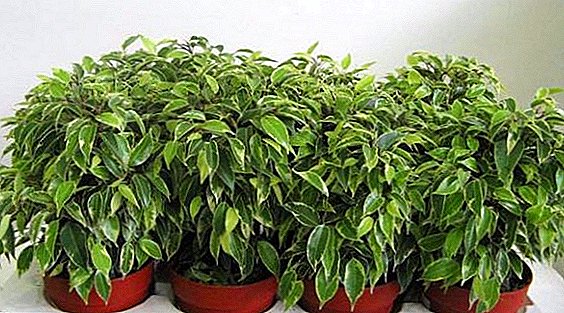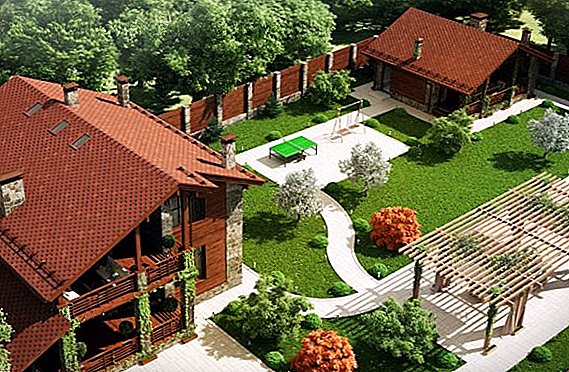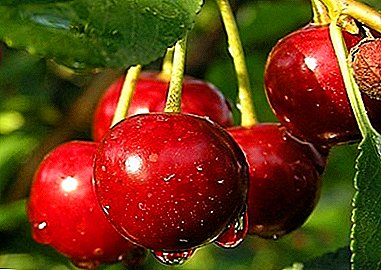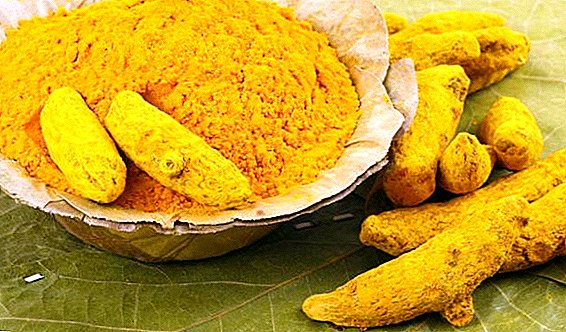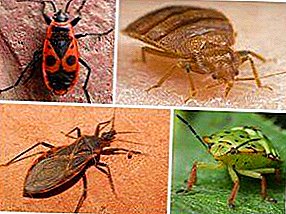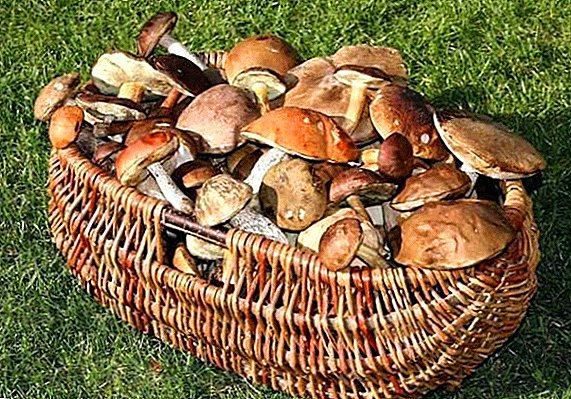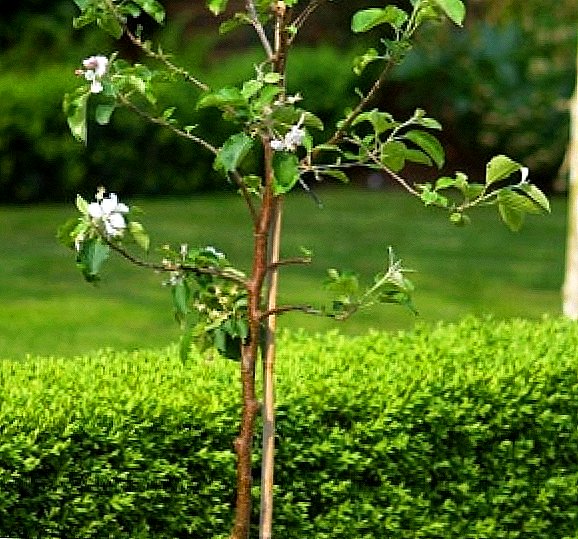
Planting any tree is not as easy as it might seem at first. Fruit trees are planted in the ground in autumn and spring.
It is believed that the best way for our climate is planting fruit trees in the fall.
Obviously, if the saplings planted in autumn are able to survive the winter cold, they will most likely delight you with their harvest and longevity in the future.
As with everything else, when planting trees there are very important points that need to be covered more closely.
This includes proper feeding, and providing the right amount of moisture, and protection from pests and winter frost.
What are the advantages of autumn planting?
The best time to land fruit tree seedlings, namely apple tree seedlings, in our temperate climate is the rainy seasonwhich falls on the middle of October and lasts until mid-November.
At this time of year, the air temperature is relatively warm and humid enough, which is the most favorable condition for planting trees. It should be noted that planting should be practiced at least 1 month before the first frost.
Autumn planting apple trees carried out after the foliage has completely dropped, 20-25 days before the arrival of frost, since even with insignificant frosts, their survival rate deteriorates and the growth of young trees is weakened. Traditionally they plant 1, 2, 3-year-old saplings, but it happens that they transfer to a new place and quite mature trees.
Since the apple tree sapling is soft in its structure, at first, after the planting of the sapling, need to provide him supportwhat is achieved with a wooden peg hammered near the rhizome. By such a peg by tying fixed young stamp of the tree, this method in the future prevents the curvature of the tree trunk.
A little bit about the hibernation of seedlings
Besides, on the eve of winter trees in particular our seedlings hibernate. Hibernation for trees is characterized by a significant decrease in biological processes in the seedling itself.
This process increases the resistance of the young tree to the procedure of digging it out and transplanting it to a new place. We must remember that the transplanted young trees should have a small amount of time. This time is necessary for the root system of the seedling, since a certain period is needed to adapt and take root to a new place before the onset of cold weather.
It will not be superfluous, and soil mulchingwhich necessary to hold around the base of the rhizome young tree. Mulching is produced by putting it over a compacted soil within half a meter from a seedling of peat, straw, autumn leaves and other humus.
It is also interesting to read about the early varieties of apple trees.
Prepare the soil before planting.
A very important point when transplanting young trees and apple seedlings is the proper preparation of the soil in which the young plant will be planted.

Without fail landing pit for a young tree should loosen. Loosening the pit is carried out by digging.
In addition, it is necessary to prepare a soil mixture - a landing pit filler. The filler is prepared as follows: the soil dug out of the pit, namely its top layer - black soil, is mixed with two buckets of organic fertilizer (humus, compost), then a little lime and a kilogram of wood ash are added to it. Useful and complex mineral fertilizers will not be out of place.
With the mixture that was prepared, they fill up a depression with a young sapling, and instead of the upper layer of soil on the already planted tree they spread a dug out of the pit, the lower, less fertile layer. After that, the soil around the seedling slightly compacted rammed and carefully mulch.
What should be the depth of the pit
During the landing, a very important factor along with the rest is the correct choice of the depth of the pit. The depth of the pit has a special meaning.
Thus, excessively in-depth planting prevents the free flow of air to the roots, and our seedling will be oppressed, and the roots of the young tree at the same time, may even rot, it is especially common on heavy soil.
With a shallow planting, the roots of the seedling are exposed, dry, and deteriorate with frost. This occurs due to sedimentation of the soil, which is an inevitable process during the planting of any plants.
With a shallow planting, the appearance of a large number of shoots is also possible, which slows down the growth of the tree itself.
So for nothing the root of the neck of a young tree should not be buried.
After planting, the saplings of all garden trees must be watered. For watering the newly planted trees need 2-3 buckets of water for 1 plant.
The dependence of the pit from the place
A characteristic feature of the soil is its fertility, as well as the ability of the soil to provide the tree with water and all the necessary nutrients. When planting young saplings of fruit trees, of course, and apple seedlings, the choice of a land plot with a relative bias will be correct.
The relative slope of the land is not more than 8 degrees, which allows it to be protected from exposure to strong winds. If the area designated for planting young trees, suggests a significant bias or other uneven terrain, it is recommended to choose a plot located in the south or south-west side of the irregularity.
Planting not recommended of trees in clay or loamy soilas well as in sandy ground. When digging a hole for a seedling, it is important to consider the terrain features, as well as the type of soil. A very important factor when digging a hole for planting fruit trees is the height of the groundwater. For planting apple trees, the optimal location of groundwater is not closer than 2.5 meters from the soil surface.
If the place for planting a young tree provides for close-lying groundwater that cannot be drained at a certain site, then the seedlings should be planted on artificially laid mounds.
The height of these mounds should be about half a meter, and the width of three meters. Artificial mounds are poured from the surface layer of the soil, this layer is more saturated with nutrient minerals. The worse and harder the soil for planting, the wider the pit should be under the seedling.
But in this case, the depth of the pit should not be increased, its reasonable depth is no more than 0.7-1 meters, because for a young tree it is very important that the seedling roots spread in the ground near the cultivated soil layer, where there are a lot of mineral and organic substances.
Go to the selection of seedlings

Equally important when planting young trees is the selection of seedlings. A seedling, first of all, is chosen only healthy. Do not purchase seedlings from unverified distributors.
A young tree intended for planting should have at least three or four lateral, skeletal, uniformly placed shoots and one vertical shoot — a continuation (conductor) of 50-60 cm long.
If there are two conductors, the second one is cut out, or rejected aside. The vertical shoot must be 15-20 cm longer than the side shoots. The shtambe must not be damaged. The roots of a young tree should have a length of 30-35 cm, and be fairly fresh, fibrous, with ramifications, not frostbitten.
Before planting, you should carefully examine the entire root system of the seedling, with a sharp shears to remove diseased roots, and the tips of healthy, too long, somewhat shortened.
If the roots of the seedling are still slightly condemned, they should be soaked for about a day. In the case of leaves on the branches, they should be carefully cut off, and all shoots of seedlings should be shortened by about a third of their length.
How to plant a seedling in a hole
The depth of the pit is important during planting. The depth of planting a young tree should be such that the root neck of the seedling is slightly above the level of the soil. This height is approximately 5 cm.
After planting, the seedling's neck is covered with a primer. Over time, shrinkage of the soil occurs, and the root neck is compared to the ground level or falls below.
The size of the pit is an important question, the pit is needed not only to accommodate the roots of the young tree, it must place fertile soil for the plant in the coming years. The depth of the landing pit unnecessarily increase the need not.
Remember that the roots of the garden tree in the near future will crawl out of the pit and continue to grow further. There are certain statistics and known pit sizes: for seed trees, the landing pit is 100 by 60 cm, for stone trees - 100 by 80 cm.
Digging up the planting pit for apple seedlings, the layer of earth lying above (as more fertile) is laid in one direction, and the bottom in the opposite. It is better to do a landing pit round, and edges of such pit - steep.
Planting time in the fall
More often planting dates fall in autumn just because the sapling is drowsy after the end of the vegetative period and is well tolerated by transplant stress.
It is advisable to plant the seedling immediately after purchase.. Otherwise, drying of the rhizome is possible, which can lead to the death of the plant itself.
In order to avoid drying out the rhizome, seedling must be soaked for 1 dayand if the conditions do not allow this, then the rhizome of the seedling is dipped in a solution of liquid clay. Such a procedure will help keep the root system of a young tree in tone for a relatively short time.
Do not forget to water the apple tree
A very important point in the care of any plant is its watering. Everyone knows the importance of water for the life of every organism, and young trees are no exception.
The very first watering of a sapling is very important for the growth of a young tree, since it is this that makes it possible to saturate the plant with a sufficient amount of moisture.

In addition, during irrigation, the necessary compaction of the soil occurs near the roots of the young tree. But it is worth knowing and remembering that pouring water under a seedling is better not using a monotonous jet, but it is necessary to irrigate with watering from a watering can.
For a sapling of the first year of life, watering is required at least once a week.. It is also important to know that an excessive amount of moisture adversely affects the seedling. Excess water causes the appearance of a crust near the rhizome, which prevents the access of oxygen and mineral substances to the tree itself.
One should also not forget to mulch the soil near the seedling, since watering around the seedling will be optimally useful after fertilizing the young plant. If possible, watering the tree is further necessary at the rate of 2 buckets per tree every day during the week. It should also be noted that watering is best done in the evening.


